It is a great pleasure to have you here in our ultimate guide on understanding M2 high-speed steel, a common material found in cutting tools industry. For its extreme hardness and ability to sustain heat, M2 high-speed steel is indispensable in the manufacture of drills, milling cutters, taps and other high-performance tools. In this blog post we will explore the properties, applications and benefits of using M2 high speed steel with a view to giving you an idea of why it is preferred for tough machining environments. This guide seeks to give you important information that you need to know about M2 High Speed Steel thereby being able to take you through the subject matter whether one is an expert or just interested parties.
What is M2 High Speed Steel?
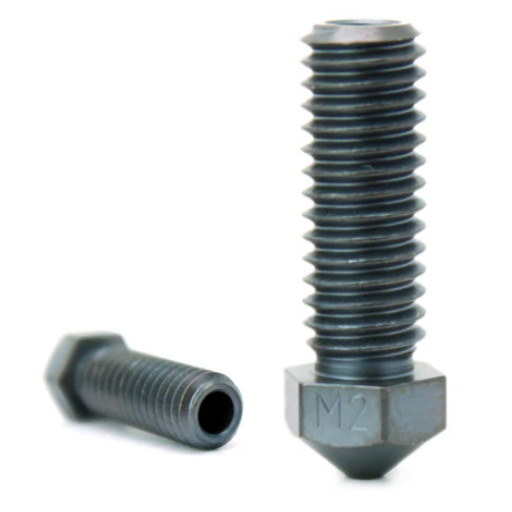
Image source: https://www.pollen.am/
M2 high speed steel also referred as HSS has been known for its exceptional wear resistance, hardness and capacity to withstand elevated temperatures associated with cutting operations. It contains accurate mixtures of elements such as cobalt, tungsten,vanadium chromium among others which make it perform excellently. For instance, such features make M2 suitable for producing several types of cutting tools including drills,milling cutters and taps that are required to stay sharp and hold together under extreme conditions during these machining processes.
Understanding M2 Steel Composition
M2 high-speed steel has excellent performance due to its accurate elements’ composition. Its typical composition is as follows:
- Tungsten (5.50-6.75%): Improved hardness and capacity to endure heat.
- Chromium (3.75-4.50%): Better wear resistance and protection from corrosion.
- Vanadium (1.75-2.20%): Greatly increases strength, hardness, and resistance to wear.
- Molybdenum (4.50-5.50%): It provides high temperature strength and makes the alloy hard.
- Cobalt (0.00-1.00%): Carbon gives the required kind of hardness under heating conditions for example through heat treatment
These elements work together in creating a steel alloy that keeps its cutting edge and structural integrity even when operating under severe conditions associated with high speed machining practice such as turning roughly forged metal rods into finished parts on a CNC mill or grinding glass lenses for optical instruments until they achieve their final shape and size.The balance between hardness, toughness and wear resistance renders M2 suitable for demanding applications where tools made from this material work effectively and serve longer than those made from other materials
Key Characteristics of M2 Tool Steel
M2 tool steel is famous for several main features that make it a preferred material for different cutting and machining applications:
- High Hardness: M2 steel has extraordinary hardness which helps it to maintain sharp cutting edges. This is made possible by its high contents of carbon and tungsten; thus, the material does not lose its toughness even after becoming abrasive.
- Excellent Wear Resistance: M2 has an exceptional ability to resist wear due to elements like chromium and vanadium, enabling it to preserve its shape and function under heavy load over a long period of time. It is therefore suitable for tools suffering from continuous abrasion.
- Superior Heat Resistance: Remarkably, M2 tool steel can withstand high temperatures as one of the most remarkable characteristics of this type of steel. It allows the retention hardness and structure in environments where speed and temperature are high so that efficiency can be achieved in machining processes.
- Toughness and Shock Resistance: Despite being hard, M2 steel still remains tough. By balancing between these two properties, any tools crafted from M2 will experience great mechanical shocks without deforming or breaking apart.
These attributes together make M2 tool steel known as reliable as well as highly effective material for meeting extreme demands usually seen in high-speed machining among other difficult applications.
Comparing M2 to Other High-Speed Steels
Other high-speed steels, such as M2, can be compared in terms of different characteristics and similarities according to modern research:
- M2 vs. M42: Often, among the various tool steel grades, m42 tool steel has a higher content of cobalt that increases its hot hardness thereby making it more suitable for use at high temperatures than m2. Nevertheless, m2 is widely used in general machining because it possesses both hardness and toughness.
- M2 vs. T1: On the other hand, T1 is a type of high speed steel which has more tungsten than molybdenum and hence more resistant to wear or abrasion; however, with excellent overall resistance to hardness and wearing out conditions maintained over long periods of operation under normal loads it does not break easily unlike T1.
- M2 vs. A2: Different from A2 tool steel as belonging to air-hardening kind meaning that it hardens without having a need for oil cooling. Thus although A2 provides good dimensional stability and is versatile enough for multiple uses, but still M2 has higher heat resistance and harder when it comes to high-speed applications hence making them suitable for demanding cutting tools.
In conclusion,M42,T1,and A2 are other high speed steels that have their unique advantages but lacks balance between toughess,wears resistance,cost effectiveness needed for fast machining.Such materials like M2 are blended together with durability and so costs less in manufacturing thus they can be used in heavy duty works involving cutting tools,forging dies etc.
How Does Heat Treatment Affect M2 Steel?
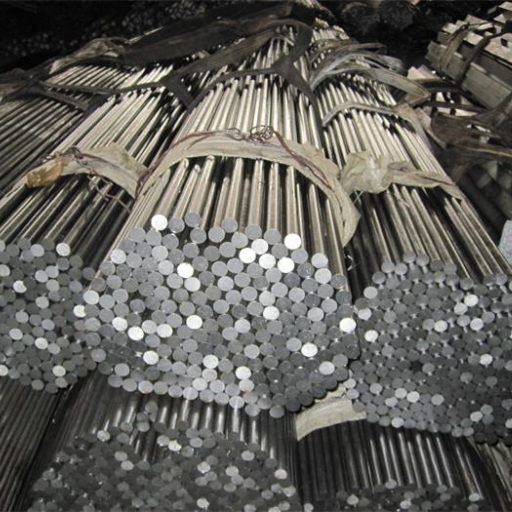
M2 steel is greatly affected by heat treatment. M2 is subjected to different treatments like annealing, hardening and tempering during heat treatment. Annealing helps in making the steel softer so that it can be easily machined. Hardening occurs when the steel is heated up and quickly cooled down, which increases its strength and hardness. Finally, tempering reduces brittleness by reheating hardened steel at a certain temperature and then allowing it to cool down; this process balances between hardness and toughness. All in all, heat treatment improves M2 steel’s mechanical properties thereby improving its resistance to wear as well as durability for high speed cutting applications.
Heat Treatment Processes for M2 Tool Steel
M2 tool steel heat treatment involves several essential processes to improve its performance in high-speed cutting applications:
- Annealing: In this process, M2 steel is heated to about 1625°F (885°C) and then cooled slowly to around 1000°F (540°C). This step softens the metal for easy machining as well as further heat treatment operations.
- Hardening: Hardening of M2 tool steel requires heating it between 2190°F (1200°C) and 2250°F (1232°C). After that, the steel is quenched by placing it into oil or a salt bath so that it cools rapidly. It results in a high level of hardness and strength.
- Tempering: After hardening, tempering occurs when the steel is reheated within temperature range of 1000°F (540°C) to 1300°F (704°C) followed by cooling in still air. This stage helps achieve an optimal compromise between hardness and toughness, thereby decreasing internal stresses plus brittleness.
These procedures enable M2 tool steel through heat treatment acquire its best mechanical properties making it ideal for high speed machining tasks with better wear resistance, longevity and performance.
Achieving Optimal Hardness through Tempering
In order to achieve the highest hardness in M2 tool steel, tempering criteria must be strictly adhered to. In line with the latest information from leading industry sources, the final hardening and toughness balance is significantly affected by the temperature at which tempering is done. For example, if we want a specific level of hardness, the steel should be uniformly reheated within 1000° F (540°C) and 1300°F (704°C) ranges. The exact time duration and temperature for tempering vary based on particular usage requirements.
Subsequently after attaining the targeted tempering temperature, it is necessary that the steel be held at this temperature for about one up to two hours then air cooled. By doing this step, brittleness decreases while internal stresses are relieved because of hardened state. However, as far as this range is concerned; higher temperatures tend to make metals tough but reduce their hardness insignificantly while lower ones generally produce harder steels but at a cost of decreasing their toughnesses.
It may be necessary to repeat the tempering process several times, whereby double or triple quenching can be accomplished with a view of ensuring constant hardness values and additional stabilization of its microstructures. Through appropriate management of tempering conditions however, M2 tool steel can be specifically adjusted by manufacturers towards achieving remarkable wear resistance and long service life for high speed machining purposes.
Effects of Quenching on M2 Steel Toughness
M2 tool steel mechanical properties are determined by quenching. To do this, the steel is rapidly cooled from austenitizing temperature which ranges between 2150°F (1177°C) and 2250°F (1232°C). Cooling it quickly using oil or air changes the microstructure to martensite phase which increases its hardness significantly.
Nevertheless, quenching process can introduce internal stresses that can make the steel more brittle. This brittleness is mitigated by subsequent tempering, which reduces internal stresses and enhances toughness. The speed at which M2 tool steel is quenched affects its final properties with faster rates usually leading to higher hardness at the expense of toughness. Conversely, controlled quenching may produce a better balance between hardness and toughness making the material suitable for demanding applications.
This level of detail in the process ensures that when dealing with M2 tool steels one combats brittle failures without losing their high abilities to resist wear. For this reason, good control of quenching parameters is necessary to improve performance of M2 tool steel in different cutting and machining operations like high-speeds.
What Are the Applications of M2 High Speed Steel?
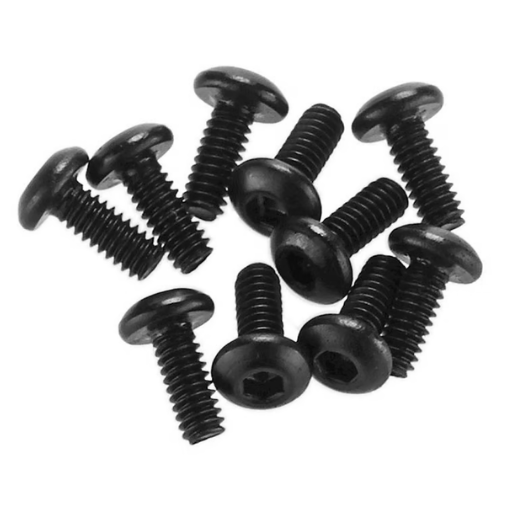
It is extremely difficult to answer why M2 high speed steel finds a ready application in many industries because of its excellent resistance to wear and strong hardness. On the other hand, it is also used for making saws, dies and punches that perform with certainty even under tough surroundings. This ability thus makes high-speed M2 tool steel preferred where precision is necessary as well as long life tools.
Use of M2 in Cutting Tools and Drills
Cutting tools and drills are important applications for M2 due to their fastness and abrasive wearing properties. As a result, M2 high speed steel is created in such a way that it maintains its cutting capacity at all times as well as its hardness regardless of the severity of operating conditions. Therefore, this explains why it is suitable for manufacturing hardwearing instruments like drill bits which need accuracy in performance. A fine-grained microstructure of the M2 assists in increasing the toughness as well as edge retention which are critical in achieving accurate and smooth cuts. Moreover, M2 steels have good thermal resistance, enabling the tools made from these materials to work continuously without losing their sharpness longer than other competing products available on the market; thereby reducing downtime hence extending tool life in industry.
Cold Work Applications of M2 Tool Steel
Not only is M2 tool steel famous for its high speeds, it is also a good choice for cold work. In the manufacturing of cold work dies, punches and forming tools. These benefit from M2’s great wear resistance and toughness which are necessary to withstand the cyclic stress and abrasion of cold working activities. The ability of M2 tool steel to maintain hardness and structural integrity at lower temperature operations makes it a preferred material for long lasting high performance cold work tools. M2 steel maintains its quality and durability throughout its life which is important in maintaining productivity and minimizing maintenance in industries.
Why Choose M2 for High Wear Resistance Needs?
M2 tool steel has excellent wear resistance due to its relatively high carbon content as well as significant alloying. It forms very fine hard carbide structures that contribute to this property. For applications requiring high-wear capability, this characteristic allows for edge retention and sharpness even under very demanding conditions. Its toughness combined with hardness permits the deformation-free use of M2 steels under significant loads. Furthermore, frequent replacements are not needed because M2 can be used at elevated temperatures while still retaining hardness, thus reducing overall costs in industrial settings where such tools are used repeatedly. This is why when long-lasting products with consistent performance that do not require regular replacement are required; manufacturers often choose to use M2 tool steels when creating their products.
What Are the Physical Properties of M2 Steel?
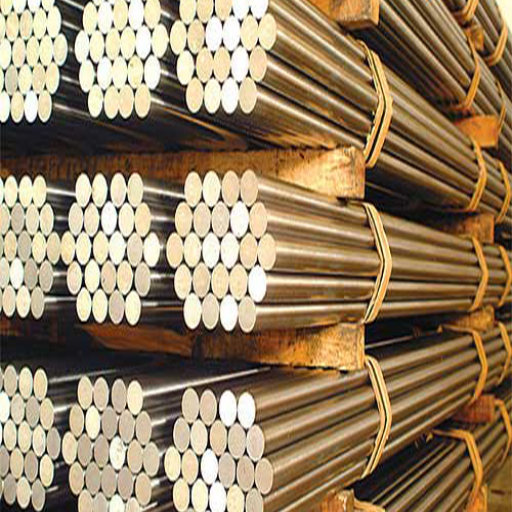
M2 tool steel has a unique set of physical properties that make it suitable for demanding industrial applications. This includes high Rockwell hardness ranging from 60 to 62 HRC, which leads to excellent wear resistance and edge holding. Its tensile strength is high, often exceeding 2000MPa., thus endowing the material with remarkable toughness and ability to resist stressful environments. In addition, M2 steel retains its hardness and stability at temperatures up to about 560°C (1040°F) in order to match applications affected by thermal stresses. Also, M2’s microstructure is finely grained so as to improve its resistance against deformation and fracture, thus making it serviceable for high-performance tooling operations.
M2 Steel Wear Resistance and Red Hardness
High-performance tooling requires M2 tool steel, which is famous for its exceptional red hardness and wear resistance. The reason behind the high Rockwell hardness of M2 steel results in greater wear resistant because of the added alloying elements such as tungsten and molybdenum present in it. This makes it possible to keep the blade sharp even during continuous use due to hard carbides made by these elements.
M2 steel possesses Red hardness that means, its ability to withstand high temperature without losing it’s its inherent qualities like hardness typically up to 560°C (1040°F). This is important for cutting tools and other industrial applications where steel is subjected to immense thermal stresses. The presence of vanadium and chromium in the alloy enhances the retention of hardness and stability of microstructure at higher temperatures, thus, maintaining a steady performance level while reducing tool change overs. Consequently, this blend of red hardness together with wear resistance creates an ideal material for use in manufacturing industries that need dependability as well as strength.
Toughness and Bending Strength of M2
M2 steel has a fine balance between hardness and toughness. Molybdenum and tungsten significantly help improve the toughness of this steel that means its ability to absorb energy and deform plastically without fracture associated with it. These elements also contribute to the steel’s microstructure, which makes it withstand sudden impacts or high pressure applications without being cracked or broken.
In terms of bending strength, tempered martensitic structure gives M2 an incredibly strong nature. Such complex microstructures created through proper heat treatment processes allow the M2 steel to retain high mechanical integrity under bending stress. It can be deformed by large amounts yet still hold its shape; an attribute important in tools having such requirements as milling cutters, drill bits etc. This outstanding tensile strength along with state-of-the-art wear resistance helps make M2 steel a desirable material for use in tough industrial environments.
Comparing the Physical Properties of M2 and T1
In comparing the physical characteristics of M2 and T1 tool steels, several similarities and differences stand out.
Composition and Hardness: M2 steel is a high-speed steel alloy made up of tungsten, molybdenum, vanadium, and chromium which make it very hard and wear resistant. Moreover, T1 is a tungsten based high-speed steel with a simpler composition consisting mostly of tungsten accompanied by traces of vanadium together with chrome. However both have high hardness levels but M2 has more superiority in terms of wear resistance due to its alloying elements being complex.
Red Hardness: Red hardness refers to the ability of a tool material to retain its hardness at elevated temperatures. Therefore, M2 has an excellent red hardness making it suitable for use in high speed cutting operations since it does not lose its hardness as the temperature increases. Nonetheless, while maintaining its hardness at greater temperatures than other materials like carbon based alloys such as T1 this red hardness is usually better in M2 because of some impurities such as molybdenum or vanadium that improve thermal stability.
Toughness: In relation to toughness however, M2 tends to be ahead than T1 due to the balance between molybdenum and tungsten that makes them work together so well that they can withstand sudden impacts without breaking. Conversely though tough enough T1 may not perform in extreme impact conditions as good as when subjected to less complicated alloying.
Application Suitability: It means that for applications requiring extensive cutting performance such as milling cutters, drill bits and heavy duty cutting tools; therefore, M2’s traits combination including hardness; red hardness; toughness make it best suited for these purposes. But still T1 continues to be one of the most popularly used materials for high speed cutting but would be capable having no much requirement on exceptionally high toughness compared with what it possesses when using M2.
However, both M2 and T1 tool steels are critical in any industrial settings especially when maximum durability, as well as thermal stress resistance is at stake.
Where Can You Buy M2 High Speed Steel?
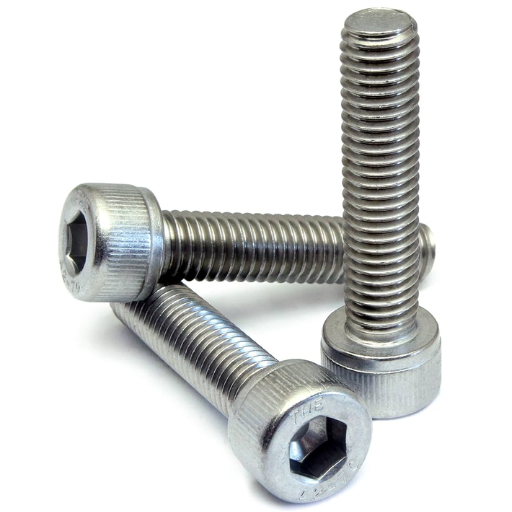
A wide range of suppliers and distributors who specifically deal with industrial materials can offer you M2 high-speed steel. Reputable suppliers such as McMaster-Carr, Grainger, and MSC Industrial Supply offer this type of material in a number of shapes including bars, rods and sheets. Moreover, online marketplaces such as Amazon and eBay display numerous listings from multiple sellers enabling cost comparisons and easy purchase placements. In case where one has to work with special demands attracting the makers themselves could be helpful such as Bohler-Uddeholm and Sandvik which have specially designed M2 steel for specified industrial purposes.
Finding Reliable Steel Suppliers Online
It is important to consider suppliers who are reliable for the steel when looking for them online.
- McMaster-Carr: McMaster-Carr is famous for its huge inventory and high-quality materials. Their product descriptions are detailed and technical specifications provided with shipping options that can be trusted. Their website is user-friendly making it easy for users to navigate through it as they procure their products.
- Grainger: Grainger has a vast selection of industrial supplies especially M2 high-speed steel. They have exceptional customer service, deliver within time frames, and stock a wide variety of their goods’ lines. Additionally, they provide other valuable resources such as comprehensive product guides and safety information via their website.
- MSC Industrial Supply: MSC Industrial Supply boasts of an extensive catalog that guarantees quality. They have several different M2 steels at accurate specification with competitive pricing mechanisms in place. This website caters for browsing and quick ordering with all sorts of industrial materials available to any kind of business purposes.
Their availability comes from all these dealers having clear information about how reliable they are in producing M2 high-speed steel, strong customer support and purchasing processes which are efficient enough.
Getting the Best Deals on M2 Steel Grades
So as to get the best deals on M2 steel grades, one needs to compare offers from trusted suppliers such as McMaster-Carr, Grainger, and MSC Industrial Supply. Below are some guidelines that will be of help.
- Compare Prices: Check the prices on these sites frequently because they usually change their rates. This kind of a comparison aids in finding out where one can buy at a cheaper price.
- Look for Promotions and Discounts: Keep an eye out for promotions, bulk discounts, or special offers on these websites. You can know when there is a sale or any other deal by signing up with them through your email address or just following them on social media.
- Consider Shipping Costs: Compare prices with respect to shipping costs. However, shipping charges may differ though reliable and prompt delivery options exist at McMaster-Carr, Grainger and MSC Industrial Supply. Therefore sometimes it’s good to increase the price of a product slightly in order to reduce shipping expenses which may lead to overall savings.
- Check for Quality and Specifications: Make sure you have selected M2 steel that suits your specific requirements. On these webpages you will find more information about any particular product type like detailed descriptions of products and technical specifications which will enable you to choose the right quality and grade.
- Leverage Customer Support: Take advantage of customer support services provided by these suppliers. You might end up getting extra discounts or relatively cheaper alternatives if you talk with their salespeople regarding your personal circumstances.
By doing this along with regularly checking what top sellers are offering, you’ll obtain great prices for M2 steel grades that nevertheless remain high quality as well as reliable sources.
Choosing the Right M2 Steel for Your Needs
It is very important to think about the specific requirements of your application when picking the right kind of M2 steel for it.
- Determine the Application Requirements: Evaluate what you need in terms of hardness, toughness, and wear resistance for your project. Cutting tools, drill bits and industrial machinery will benefit from the fast cutting ability and durability which characterize M2 steel.
- Check Material Grades and Specifications: Look through McMaster-Carr, Grainger, MSC Industrial Supply for grades, specifications of M2 Steel. In addition its conformity to ASTM or ANSI standards can help confirm that your steel is reliable and performs well.
- Evaluate Heat Treatment Options: Learn about heat treatments available for M2 steels to improve their hardness and strength. The supplier should provide information regarding preferred method(s) of heat treating steel so that they are optimized for use in particular applications.
- Consider Product Availability and Lead Times: Check whether M2 steel types required by you are available any time soon including lead period. Prompt availability may be crucial to project timelines and avoidance of delays.
- Review Customer Feedback and Ratings: Find customer reviews with ratings on each suppliers’ website such as these two mentioned sites or even this third one here. Feedback from other users can offer insights that will assist while making up your mind.
By carefully considering these factors together with leveraging the detailed resources available on McMaster-Carr, Grainger, and MSC Industrial Supply , you can choose the best M2 steel that suits your needs in terms of both quality and performance.
Frequently Asked Questions (FAQs)
Q: What is M2 High Speed Steel?
A: M2 high speed steel, also known as AISI M2, is a tungsten-molybdenum high-speed steel that is well-known for its superior properties, including high wear resistance and red hardness. It is a popular high-speed steel for a variety of applications involving cold work punches and dies.
Q: What is the chemical composition of M2 High Speed Steel?
A: The chemical composition of M2 high-speed steel typically includes carbon, tungsten, molybdenum, vanadium, chromium, and small amounts of other elements. The high carbon content and alloying elements contribute to its superior hardness and wear resistance.
Q: How does M2 High Speed Steel compare to other tool steels?
A: M2 high-speed steel is by far the most popular high-speed tool steel due to its excellent balance of toughness, wear resistance, and red hardness properties. It is preferred over T1 in most applications because of its superior performance in both high-speed and light cuts.
Q: What are the main applications of M2 High Speed Steel?
A: M2 high speed tool steel is widely used in cold work punches, dies, and cutting applications involving both high speeds and light cuts. Its superior properties make it suitable for a variety of applications that demand high wear resistance and toughness.
Q: How is M2 High Speed Steel heat treated?
A: Heat treatment of M2 high speed tool steel involves heating the steel at a rate that allows the elements to dissolve and then quenching to lock the desired structure in place. Proper heat treatment enhances the steel’s hardness and wear resistance.
Q: Why is M2 High Speed Steel considered a special steel?
A: M2 high-speed steel is considered a special steel due to its complex chemical composition and superior properties. Its high carbon content, combined with the presence of tungsten and molybdenum, gives it unique toughness and wear resistance, making it suitable for demanding applications.
Q: What are the red hardness properties of M2 High Speed Steel?
A: Red hardness properties refer to the ability of the steel to retain hardness and strength at elevated temperatures. M2 high-speed steel exhibits excellent red hardness properties, allowing it to perform well in high-speed applications where the tool generates significant heat.
Q: Can M2 High Speed Steel be used in place of carbon steel?
A: Yes, M2 high-speed steel can replace carbon steel in many applications due to its superior wear resistance and hardness. While carbon steel is suitable for basic applications, M2 offers greater performance, especially in demanding conditions.
Q: Where can I buy M2 High Speed Steel online?
A: You can purchase M2 high-speed steel online from various steel suppliers and specialty retailers. Ensure you choose a reputable provider to get high-quality steel M2 that meets AISI standards.





